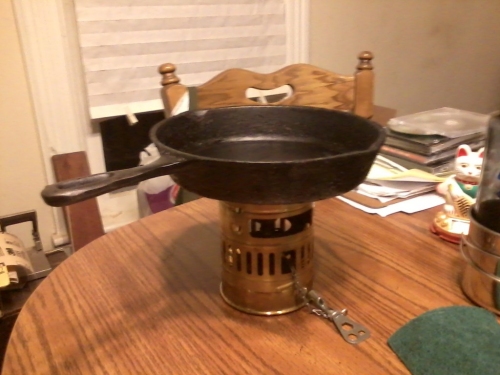
*The Svea 123R Stove*
I promised an article on the Svea 123R stove and I like keeping my word, so here goes...
As I said in my previous article, my go-to camping stove most times is any of several Trangia stoves I own. They are adequate for most needs and as I've extolled their virtues elsewhere, little more needs to be said of them except they're not the best when it's REALLY cold.
I got my Svea 123R stove shortly after I returned from my first tour downrange. Having just become a Rubie and having a comfortable sum of cash saved up from my tour, I was able to afford anything in the line of camping stoves I might have wanted. Any Rubie knows how to research a topic, and this is just what I did when I set out to find the perfect year-round backpack camp stove for me. In the end I decided upon the Svea for the following reasons:
You get four things when you buy a Svea stove:
If any complaint can be had against the Svea, it is this dinky "saucepan." True, it fits perfectly over the top of the stove, but no useful amount of food can be cooked in it. Its volume is 12 measured ounces precisely, and this is going all the way to the rim. The camper is fortunate, however, that he need not content himself with this tin demitasse. Some stoves are designed to be used only with a certain vessel – the Jetboil comes to mind. The Svea, on the other hand, will work with anything of a reasonable size, even pots which are much larger in diameter than the stove, as the photograph below shows.

It is also the case that Svea 123R stoves are identical in diameter to 1-quart Nalgene bottles. I do not know whether this is by design or dumb luck, but the upshot is any cup made to fit a Nalgene bottle will fit over the stove in place of the dinky "saucepan." In addition, Coleman, Optimus – and no doubt others – put out "solo" type kits which fit the stove likewise. It is the set by Coleman which you will see in the photographs below.
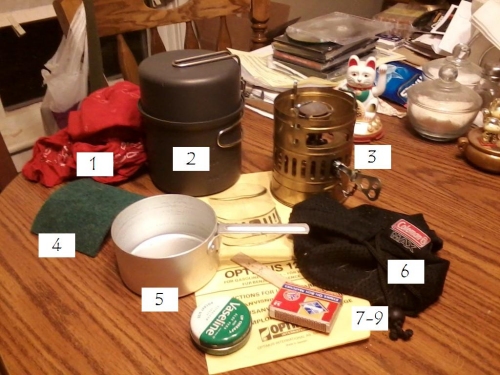
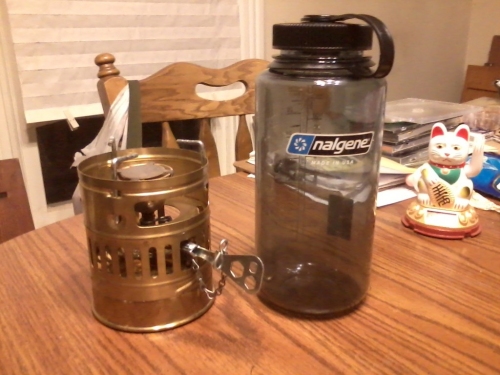
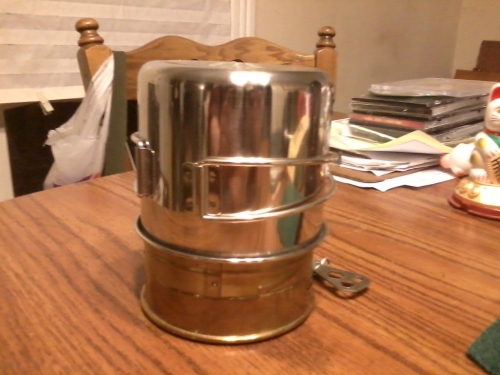
You will see in the above photos everything needed to get the stove going and keep it going, minus extra fuel of course. The quantity stored in the stove's reservoir is enough for more than just one meal or two. In this way the Svea has something of an advantage, albeit at the margins only, over alcohol stoves like my Trangias. Less fuel by volume is used per session with the Svea than with the Trangia.
Research the Svea online and you will find conflicting accounts as to whether it will burn gasoline/petrol. For my part, I've never tried it, and for a good reason. I once owned a military M1950 "Squad Stove." You can find an article for it on the Rubicon here: : http://www.alpharubicon.com/warlord/restricted/alphaway/mildualfuel.htm
It was a fine piece of engineering that ran on gasoline; and while twice the size of the Svea, ran nicely enough that I could envision putting it in my car. It came with an elegant two-part cover which doubled as cooking vessels. Rather, I ought to say that these covers would have doubled as cooking vessels if I hadn't used gasoline. You see, the vapors which inevitably escaped from the Squad Stove tainted the aluminum of the covers, and no amount of detergent would get it out. I suppose I could have washed them with acetone but I got rid of that Squad Stove and never looked back. The Svea is better than the M1950 Squad Stove in every respect except fuel-flexibility, which I find to be a trifle. I've only ever run the Svea using "white gas" or Coleman fuel, which is the only fuel I recommend for it.
Being a white gas stove, it must be pressurized to start, after which, upon lighting, the stove will pressurize itself. The manual contemplates two methods for priming the stove and there is yet a third, but I only recommend one. The manual suggests putting a few drops of white gas in the little indentation in the tank. Alternately, a bit of fire paste can be squirted into said base. I use the latter method; for while it takes longer to prime, the paste is tidier, there is no hazard of spilling the stuff, and it is not nearly so volatile as the fuel itself while still working perfectly.
There is a third method which I do not recommend under any circumstances. Available as a separately-purchased accessory is a small pump, shown in these photos:
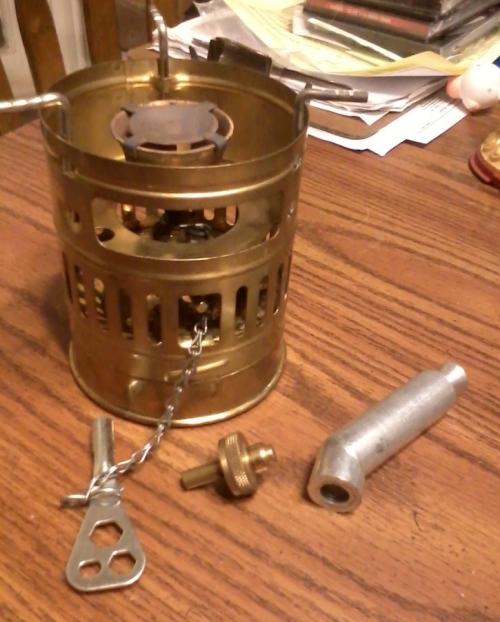
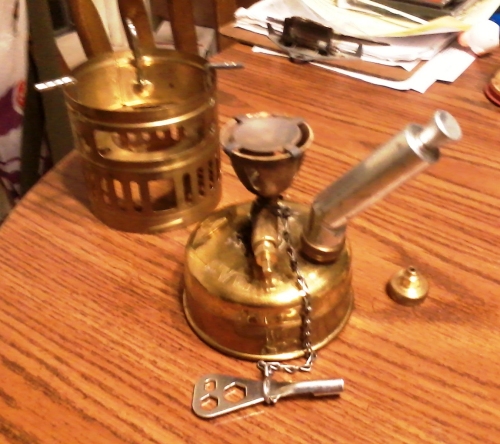
You will note that it is machined aluminum with a little o-ring. The little brass bit is a fuel tank cap which is meant to replace the one the Svea normally comes with. The pump is supposed to be used only in extreme cold or at high altitudes. Maybe it gets cold enough to use the pump in, say, New Hampshire or Alaska or in the Himalayas. I can tell you from experience that it does NOT get cold enough in Indiana to justify owning it. I used it exactly once, and that once produced upon lighting, with just a single stroke of the pump, a 7-foot tall geyser of flame that was as spectacular as it was horrifying. It works, but too well. You don't need this pump nearly as much as you need your eyelashes, eyebrows, hair or fingers.
The instructions which come with it are printed in several European languages, to include the U.K. version of English. They are concise, but complete; between the text and photos, anyone of more than feeble-minded intellect can get the thing safely going.
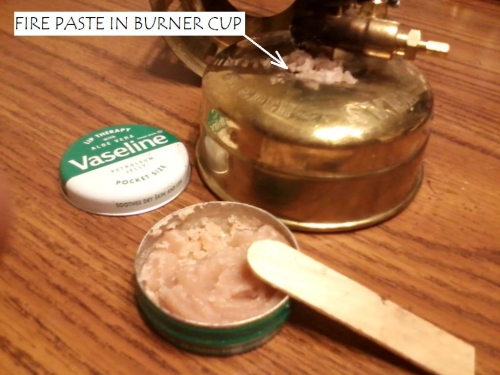
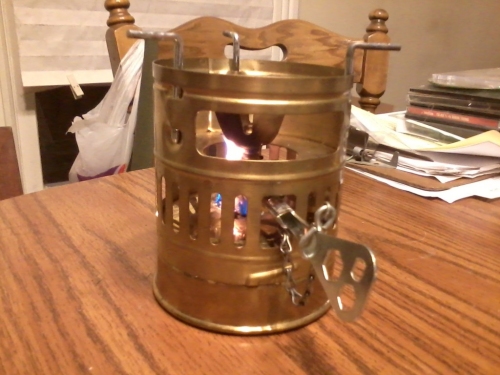
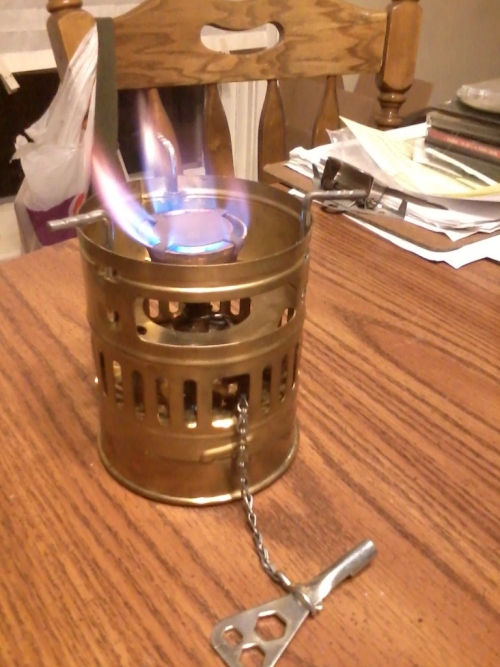
Once you get it going, the first thing you'll notice is that it is a purely civilian stove – there is not a blooming thing "tactical" about it. Being brass, it is shiny; being white-gas powered and operating on the principle of vaporization under pressure, it is loud. The area of the flame is much smaller than a Coleman stove, but it is sufficient for pots of the size a backpacker is likely to carry. It will do all that a Coleman stove will do for a camper, and since the tank is self-pressurizing, there is no need to pump the tank to keep the flame going – it will work until it is shut off or runs out of fuel. It will simmer, but the manufacturer recommends letting it work up to running temperature before turning it down to simmer, for it is not efficient to start with a simmer.
There are of course newer stoves than the Svea 123R, with many more features and more stuff which will work with them. There's no disputing it. If you're the type of stove user who might need to use kerosene, gasoline, "white gas" and benzene all in the same trip, this is not the stove for you. If you need more stove than a Trangia but weight is the prime desideratum, there are (somewhat) lighter stoves out there. But if this is not the case, and all you need is one stove for one type of fuel, you could do far worse than own a Svea. It has fewer moving parts, fewer things can go wrong with it, and it needs less maintenance than many other stoves of its class while still performing as well or better, and at least as reliably. I submit that if you could have only one camp stove, and you have the money for whatever you like, the Svea is a worthwhile investment. I've never met nor read the account of someone wishing they'd never got their Svea, but I've read accounts of many people who regretted getting rid of one.
gvi
www.alpharubicon.com
All materials at this site not otherwise credited are Copyright © 1996 - 2014 Trip Williams. All rights reserved. May be reproduced for personal use only. Use of any material contained herein is subject to stated terms or written permission.